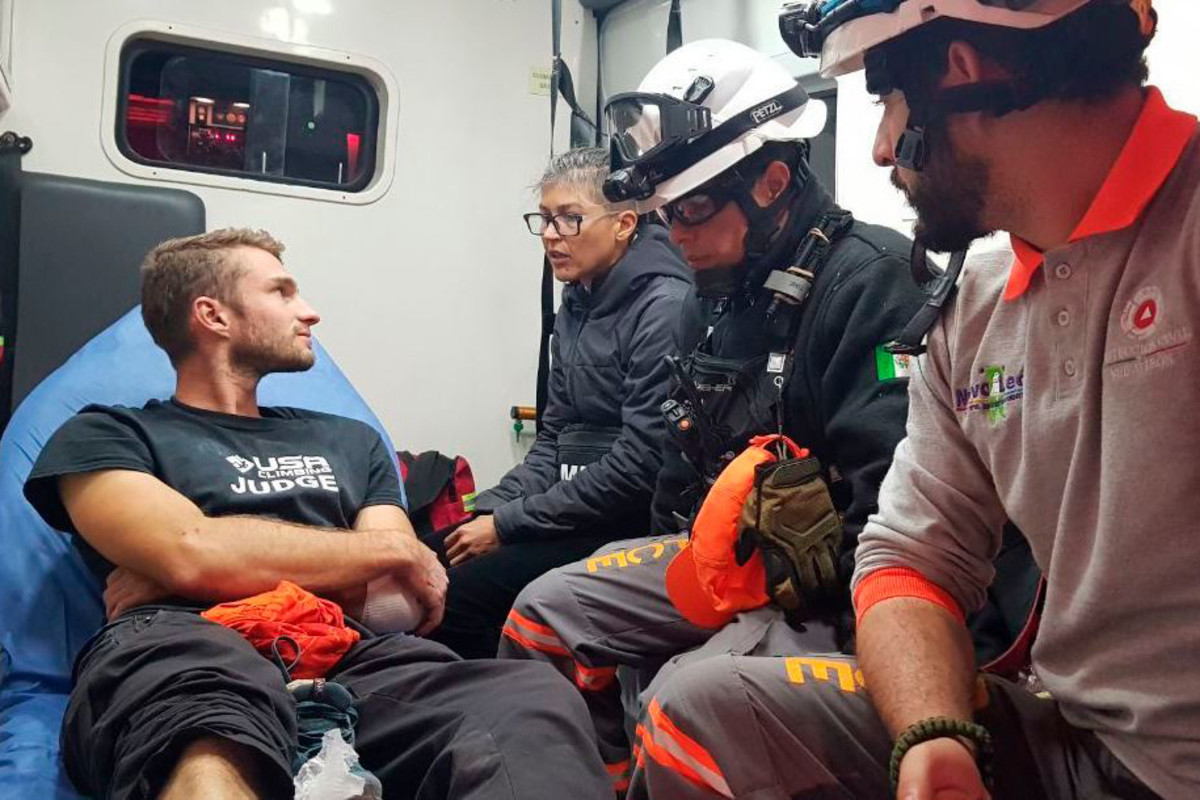from Reuters: Health News https://ift.tt/2Y3Gl5M
via IFTTT
Brad Gobright, a world-renowned rock climber known for his free solo ascents, fell to his death Wednesday while rappelling off a mountain in Mexico. The California native was 31 years old.
Together with Aidan Jacobson (pictured below receiving medical attention after the accident), Gobright had summited the 15-pitch El Sendero Luminoso route in El Potrero Chico, Nuevo León, Mexico. According to Rock and Ice, the two were simul-rappelling downward when both fell — Jacobson just 30 feet onto a ledge, Gobright some 1,000 feet to his death.

Gobright’s previous climbs included a free ascent with partner Alex Honnold of the El Niño route on Yosemite National Park. Honnold reacted to the “crushing loss” of the “warm, kind soul” on Thursday, calling his friend a “real gem of a man” on Instagram.
“I suppose there’s something to be said about being safe out there and the inherent risks in climbing but I don’t really care about that right now,” Honnold posted. “I’m just sad for Brad and his family.”
Gobright also made headlines in 2017 when he and Jim Reynolds set a speed record on one of the most dangerous parts of El Capitan—the Nose.
“Thinking we could try for the record seemed crazy at first,” Gobright told the San Francisco Chronicle afterward. “It was this really big, big goal that seemed kind of out of reach. I think that’s why we wanted to do it.”
Honnold’s full tribute reads:
View this post on InstagramA post shared by Alex Honnold (@alexhonnold) on
For most people, going to the doctor is usually a bit nerve-racking. But for some, the stress of a medical appointment triggers a temporary rise in blood pressure. If that’s the case for you — and if your blood pressure is normal at home and in other nonmedical settings — you may have what’s known as white-coat hypertension. Now, a large study suggests that people with this condition face a greater threat of heart disease than people whose blood pressure readings are always normal.
According to current guidelines from the American College of Cardiology and the American Heart Association, normal blood pressure is defined as less than 120/80. High blood pressure is 130/80 and higher.
“If your blood pressure goes up under the relatively nonthreatening situation of seeing a doctor, then what might happen if you’re cut off on the highway, or experience a challenging family or work circumstance?” says Dr. Randall Zusman, a cardiologist at Harvard-affiliated Massachusetts General Hospital.
Everyone’s blood pressure fluctuates constantly throughout the day. But people with white-coat hypertension may experience more frequent and higher spikes. About one in five people has the condition, which doctors typically don’t treat with medication.
For the study, researchers pooled findings from 27 studies involving more than 64,000 people in the United States, Europe, and Asia. Compared with people whose blood pressure was normal both at the doctor’s office and at home, people with untreated white-coat hypertension had a 36% higher risk of heart attack, stroke, and other heart-related events. They were also twice as likely to die from heart disease.
However, people taking blood pressure medication whose blood pressure still rose at the doctor’s office (a phenomenon known as the white-coat effect) did not have a higher risk of heart disease. The study was published June 10 in Annals of Internal Medicine.
According to Dr. Zusman, the findings lend further support for treating people with white-coat hypertension. Research suggests that the condition nearly always progresses to sustained high blood pressure.
Treatment doesn’t necessarily mean taking blood pressure medication, however. “Losing weight, exercising, limiting salt, and not smoking are all associated with better blood pressure control. I certainly encourage people to do all those things, whether they have intermittent or sustained high blood pressure,” says Dr. Zusman.
Sometimes, even determined efforts to make these changes aren’t sufficient. If lifestyle changes aimed at controlling hypertension can’t bring your blood pressure down to a normal range, there are many safe, effective medications that can help.
Dr. Zusman advises all of his patients to use a home blood pressure monitor to make sure their treatment is working. “I also have them bring their device in and watch them take their blood pressure to make sure they’re using the monitor correctly,” he says. Doctors often suggest checking your blood pressure once or twice a day for a week or so right after starting or changing medications. After that, two to three times a week at different times of the day is a good idea, says Dr. Zusman.
The post Could white-coat hypertension harm your heart? appeared first on Harvard Health Blog.